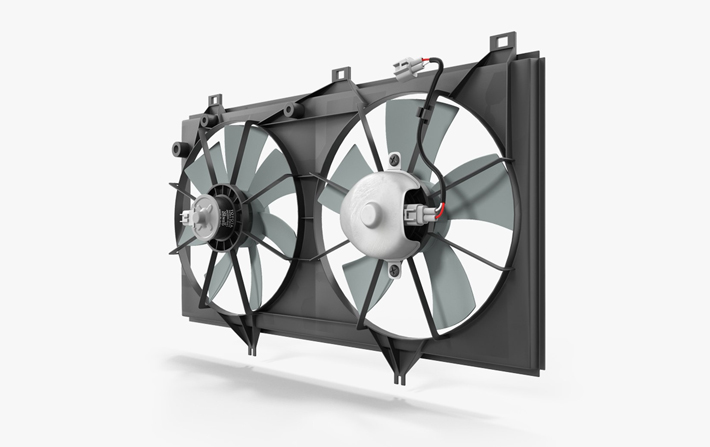What Could Cause a Car Radiator Fan to Stop Working?
2025-04-01
The radiator fan is a critical component of a vehicle’s cooling system, responsible for dissipating heat and maintaining the engine at a safe operating temperature. If the fan fails to spin, it can lead to engine overheating, reduced performance, or even severe damage. This article explores common reasons for radiator fan failure, offering clear explanations and troubleshooting steps for car owners and consumers.

Blown Fuse
The radiator fan circuit is protected by a fuse. If the fuse blows due to an electrical overload or short circuit, the fan loses power.
Troubleshooting:
Locate the fuse linked to the radiator fan (refer to the vehicle manual; typically in the cabin or engine bay fuse box).
Inspect the fuse for signs of melting or breakage. Replace it with one of the same rating.
If the new fuse blows again, check for underlying electrical issues like a short circuit.
Faulty Relay
The relay acts as an electronic switch to activate the fan. Corrosion, aging, or internal damage can prevent it from functioning.
Troubleshooting:
Locate the fan relay (usually in the fuse box) and swap it with an identical relay (e.g., horn or headlight relay).
If the fan starts working, replace the faulty relay.
Failed Temperature Sensor/Thermostatic Switch
The fan is triggered by a coolant temperature sensor or thermostatic switch. If these components malfunction, the fan may not receive the "start" signal.
Troubleshooting:
Use an OBD-II scanner to check if the coolant temperature readings match actual conditions.
Bypass the thermostatic switch circuit (consult wiring diagrams) to test if the fan activates.
Damaged Fan Motor
The motor drives the fan blades. Over time, worn brushes, burnt coils, or seized bearings can cause motor failure.
Troubleshooting:
Disconnect the motor from the vehicle’s wiring and apply direct power (e.g., using a 12V battery). If it doesn’t spin, the motor is faulty.
Grinding noises may indicate worn bearings requiring lubrication or replacement.
Wiring Issues
Damaged, corroded, or loose wiring connections can interrupt power to the fan.
Troubleshooting:
Inspect wiring harnesses and connectors for corrosion, fraying, or disconnection.
Use a multimeter to test voltage at the fan motor’s power supply terminal.
ECU Malfunction
In modern vehicles, the Engine Control Unit (ECU) manages the fan. Software glitches, faulty circuits, or incorrect temperature signals can disrupt fan operation.
Troubleshooting:
Scan the ECU for error codes and verify if coolant temperature data is transmitted correctly.
Professional reprogramming or ECU replacement may be required.
Fan Obstruction or Mechanical Binding
Debris (e.g., leaves, mud) can jam the fan blades, or rusted bearings may prevent rotation.
Troubleshooting:
Visually inspect the fan for obstructions. Clean the blades and test rotation by hand.
If movement is stiff, disassemble the fan for lubrication or bearing replacement.
Belt/Drive System Failure (Older Vehicles)
In belt-driven fan systems, a broken, loose, or worn belt (or faulty tensioner) can stop the fan.
Troubleshooting:
Check the belt for cracks, fraying, or improper tension.
Replace the belt or adjust the tensioner as needed.
Tips for Car Owners
1. Monitor the Temperature Gauge**: Pull over immediately if the engine overheats.
2. Regular Maintenance**: Replace coolant periodically and clean the radiator to prevent debris buildup.
3. Avoid DIY Repairs for Complex Issues**: Sensor or ECU-related problems should be handled by professionals.
Summary
A non-functioning radiator fan can stem from electrical, mechanical, or control system failures. While simple fixes like replacing fuses or relays can be done at home, advanced diagnostics (e.g., ECU testing) require professional tools. Addressing fan issues promptly protects your engine, enhances safety, and improves fuel efficiency. If unsure, consult a certified mechanic to avoid costly repairs down the road.